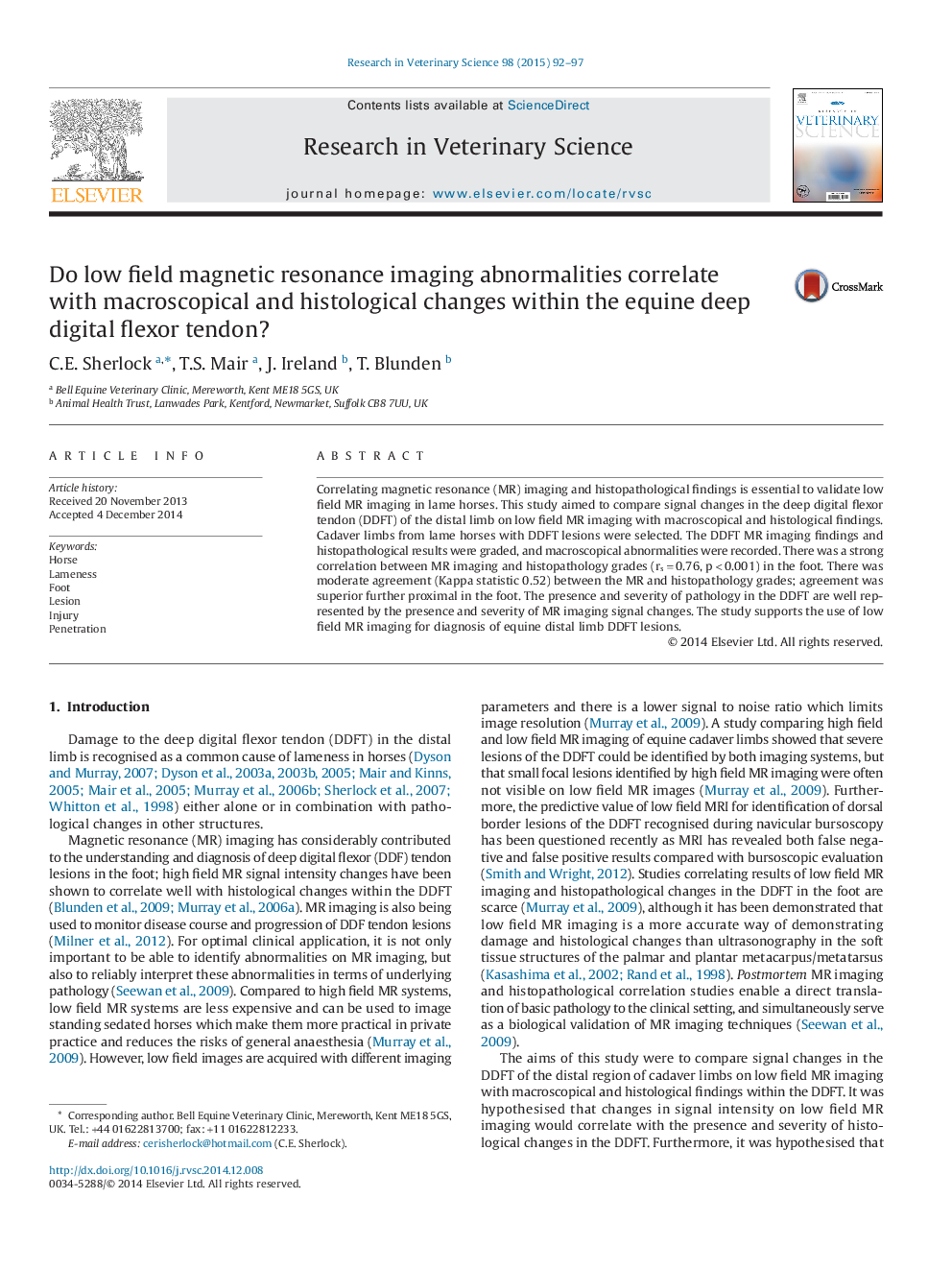| Article ID | Journal | Published Year | Pages | File Type |
|---|---|---|---|---|
| 2454740 | Research in Veterinary Science | 2015 | 6 Pages |
•There was a strong correlation between MR imaging and histopathology grades in the foot.•There was moderate agreement between the MR and histopathology grades; agreement was superior further proximal in the foot.•The presence and severity of pathology in the DDFT are well represented by MR imaging signal changes.•The study supports the use of low field MR imaging for diagnosis of equine distal limb DDFT lesions.
Correlating magnetic resonance (MR) imaging and histopathological findings is essential to validate low field MR imaging in lame horses. This study aimed to compare signal changes in the deep digital flexor tendon (DDFT) of the distal limb on low field MR imaging with macroscopical and histological findings. Cadaver limbs from lame horses with DDFT lesions were selected. The DDFT MR imaging findings and histopathological results were graded, and macroscopical abnormalities were recorded. There was a strong correlation between MR imaging and histopathology grades (rs = 0.76, p < 0.001) in the foot. There was moderate agreement (Kappa statistic 0.52) between the MR and histopathology grades; agreement was superior further proximal in the foot. The presence and severity of pathology in the DDFT are well represented by the presence and severity of MR imaging signal changes. The study supports the use of low field MR imaging for diagnosis of equine distal limb DDFT lesions.
